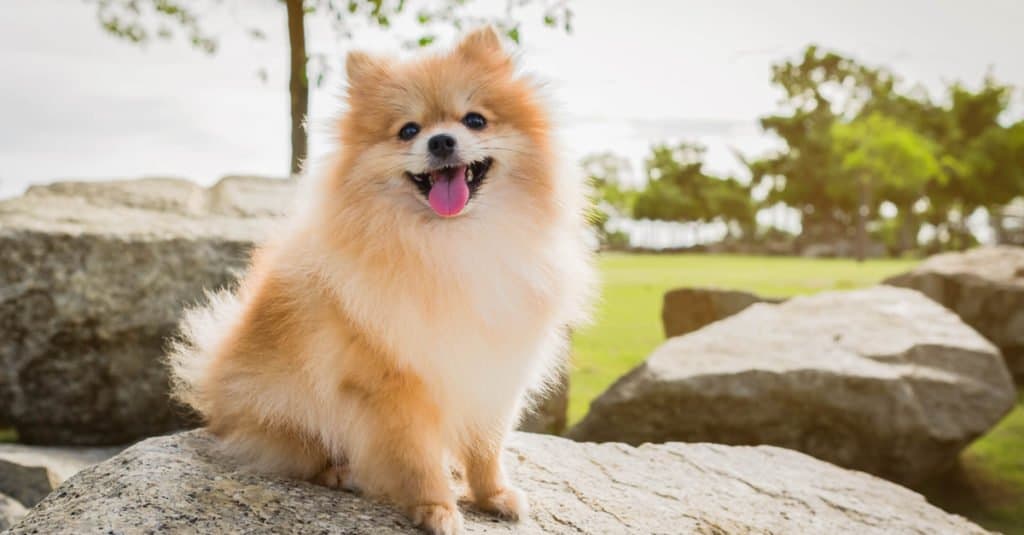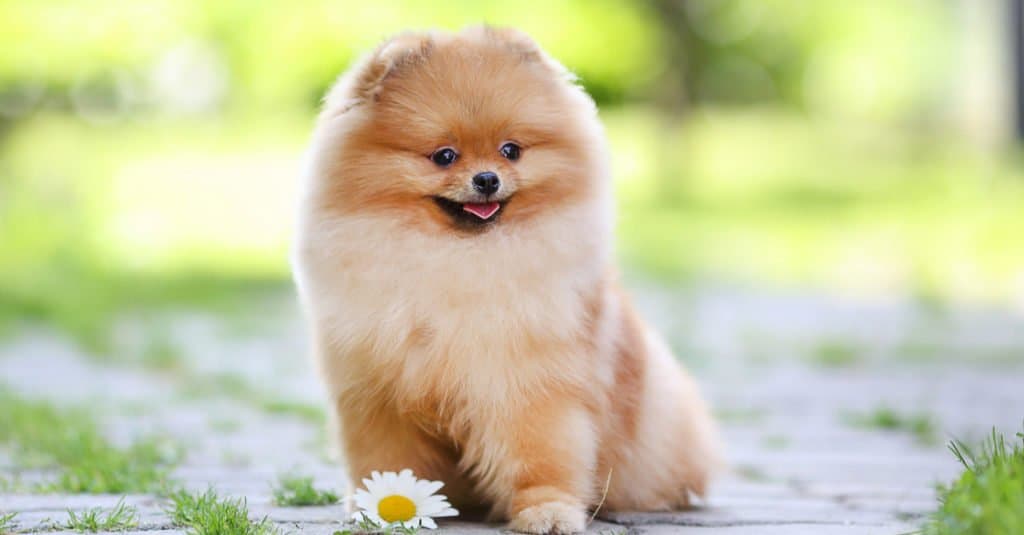Bringing new life into the world is an amazing experience, one that leaves us in complete awe. The journey of motherhood brings about feelings of happiness and anticipation, especially when you get to marvel at this beautiful Pomeranian miracle happening before your eyes. In this blog post, we’ll discuss the important events that happen during the Pomeranian pregnancy journey, which include weekly milestones and a step-by-step care guide for you to follow, so your Pomeranian has a healthy and stress-free birthing experience.
What does it mean when your Pomeranian goes through its Gestation Period?
The term gestation refers to a time when the female dog goes through each phase of her pregnancy as she supports and nurtures her developing pups within her body before giving birth. On average, it takes Pomeranians around about two months, roughly 63 days, to complete their gestation period.

Gestation milestones are general guidelines. The progression of each pregnancy can be different for each dog.
©pattarawat/Shutterstock.com
Week 1-2
The journey towards the beginning stage of creating life happens when mating takes place between the male and female. This means that the male’s sperm will fertilize the female’s eggs. Next, the fertilized eggs journey through the mother’s reproductive system, where the embryos start evolving into small sacs that attach themselves to the uterine lining to obtain essential nourishment and support to develop.
Week 3
Approximately three weeks into a Pomeranian pregnancy marks a pivotal period of growth for these embryonic specimens. In this timeframe, a range of cellular forms combines into a neural tube which is essential as it represents the blueprint for each puppy’s central nervous system. Furthermore, at this stage of their development, the embryos are still exceedingly small and are not yet identified as individual puppies.
Week 4
Upon reaching the four-week mark of a Pomeranian pregnancy, the sac of the embryos starts to form identifiable shapes. Its organs, including the liver, heart, and kidney, progressively start developing. The female Pomeranian will begin to experience changes such as weight gain and behavioral changes at this point.
Week 5
In the fifth week of a Pomeranian pregnancy, there is notable progress in tracking the embryos’ growth cycle. The limb buds emerge during this stage, laying down a foundation for leg formation to occur later. Furthermore, facial features like eyes and nose become more apparent than before, giving an outline to their profile. Finally, as the fetuses grow bigger in size, the mother’s belly will expand and become more visible in appearance.
Week 6
As the sixth week progresses, the bodies of puppies undergo a significant change becoming more distinctive. At this point, they develop teeny toes and claws while their internal organs continue to grow and mature. Meanwhile, the mother’s nipples may become more prominent as her body gets ready for nursing her little ones.
Week 7
Puppies undergo vital developmental milestones during their seventh week inside the womb. This period is characterized by significant growth where its skeleton hardens, and distinct physical features through structural changes in their bodies continue to develop. The mother dog may display nesting behaviors by creating an optimal birthing environment while elevating her protective instincts towards her unborn puppies.
Week 8-9
As the end of pregnancy approaches, their organs have finally developed entirely while their skeletal structure continues to grow. Due to this final phase of growth, the mother will start feeling restless and uncomfortable due to her notably large tummy. In addition, at last, the pups are fully formed and ready to be born.
Keep in mind that the milestones outlined are general guidelines and may not necessarily apply to all Pomeranians. Therefore, the progression of each pregnancy is different for each dog.
Care Guide During Pregnancy
- Prioritize your dog’s wellness by following nutritional requirements, which are provided by a qualified veterinarian.
- Always supply fresh water throughout the day to maintain your dog’s hydration.
- Maintain your dog’s exercise routines throughout her pregnancy. However, it is sensible to avoid strenuous activities such as jumping, especially when she is further along in her pregnancy.
- Create a quiet and relaxed environment for her to get enough optimal rest. In addition, you can provide her with a whelping box where she can have her own privacy and comfort during her nesting stage.
- To ensure that your pregnant dog maintains optimal health throughout her pregnancy, take her every month to the vet and get her weighed. She might have a change in appetite which can result in weight loss or weight gain.
- The most important part of her pregnancy is to schedule regular veterinary examinations alongside ultrasound scans. These will facilitate diligent tracking of stages of her gestational progress, allowing any concerns to be addressed immediately.
Post Birth Care
- Allow bonding between the mother dog and her pups, as this is an important aspect of promoting healthy development. Keep an attentive eye on the mother when she interacts with her puppies to ensure she cares for them sufficiently.
- For optimal care, it is essential to frequently clean the whelping box to keep her and the puppy’s environment sanitary.
- Ensure that the whelping box is warm and well-insulated because newborn puppies cannot regulate their body temperature.
- It’s essential to closely monitor newly born puppies’ nursing and weight gain progress. If the puppies are not receiving enough nutrition, seek advice from a veterinarian who can address these concerns.
- Supporting the mother dog’s recovery journey and promoting optimal milk production can be achieved by maintaining a consistent regime of nutritious feeding.
- Schedule a post-birth check-up for both mother and puppies to check for any health concerns.

Pomeranians are smart, understanding their training relatively easily.
©Dulova Olga/Shutterstock.com
The photo featured at the top of this post is © Eric Isselee/Shutterstock.com
Ready to discover the top 10 cutest dog breeds in the entire world?
How about the fastest dogs, the largest dogs and those that are -- quite frankly -- just the kindest dogs on the planet? Each day, AZ Animals sends out lists just like this to our thousands of email subscribers. And the best part? It's FREE. Join today by entering your email below.
Thank you for reading! Have some feedback for us? Contact the AZ Animals editorial team.






